
views
Making a Basic Seashell Necklace
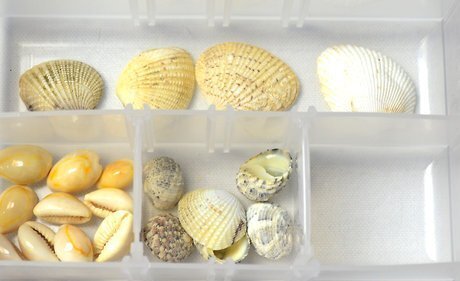
Choose the shells you want to use. You can select shells based on a variety of factors, including type, shape, size, color, or pattern. The shells and necklace style you choose are a matter of personal preference, so feel free to experiment. Before drilling holes in the shells, arrange them on a flat surface so you can see how they’ll look together as a necklace. To make a pendant necklace, choose a medium shell with an interesting shape or color. You can also decorate a pendant necklace with smaller shells, but make sure they match or complement the design, color, and shape of the centerpiece. Another option is to create a bold necklace with lots of medium-sized shells, which can either be distributed evenly around a cord or clustered together at the bottom.

Choose additional decorations. Just because the focus of your necklace is the seashell doesn’t mean you can't embellish it with other decorations, such as beads, charms, flowers, stones, and other jewels. Select decorations that complement the size, shape, and color of your shells. Make sure to match the embellishments with the type of cord you use as well.
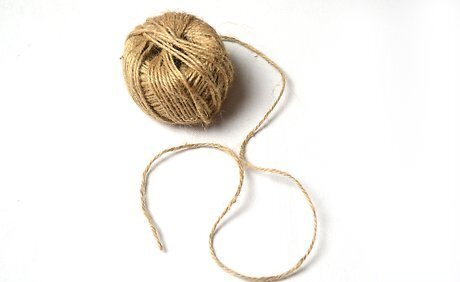
Pick a cord. There are many types of cords you can use when making a necklace, and the style you choose will depend on the look you're going for. Whatever style you are going for, though, choose a durable cord so that the necklace won't break. To create a piece of fine art, choose a metal chain in gold or silver.
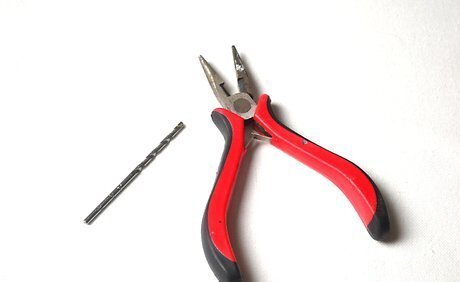
Gather your tools and supplies. To make your necklace, you will need a drill with a one-sixteenth-inch (1.6 mm) drill bit, jewelry findings, and needle nosed pliers. In case you don’t have a drill, you can use a nail or screw and a hammer to make holes. Jewelry findings that you may need include jump rings to attach the shells to the cord, and a clasp mechanism to close the necklace. Findings are optional if you're using string or cord, as you can choose to wrap the cord and tie the necklace instead. With metal necklace chains, you likely won’t have to worry about a clasp, as this will already be attached.
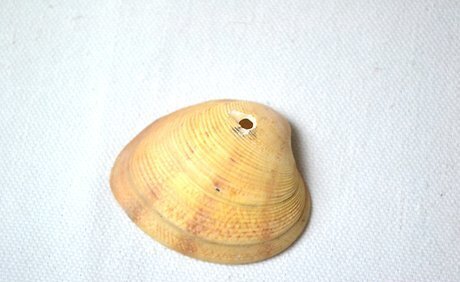
Drill a hole in each shell. In order to string your shells onto a cord, you will need to create a hole in each shell. Use a marker or pencil to mark the spot on each shell where you want it to attach to the cord. Hold the shell against a flat surface and use light pressure to drill a small hole in the shell. Start drilling on the inside and work your way out. If you don’t have a drill, make an initial hole by using a hammer to gently tap the head of a screw or nail through the shell. Once you have a small hole, turn the head of the nail or screw back and forth inside the hole until it’s large enough to accommodate the jump ring or your twine.
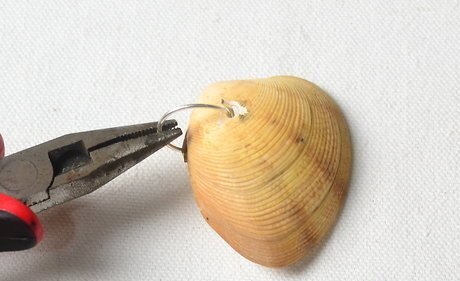
Attach a jump ring to each shell. Using jump rings is optional, but it will help your shells hang properly on the cord. Grab the pliers and a jump ring, and use the pliers to stretch the jump ring open. Loop the ring through the hole in a shell, then close the ring with the pliers. Repeat this step for every shell you'll be stringing on your necklace. For added interest, you can hang more than one shell, charm, or bead on each jump ring.
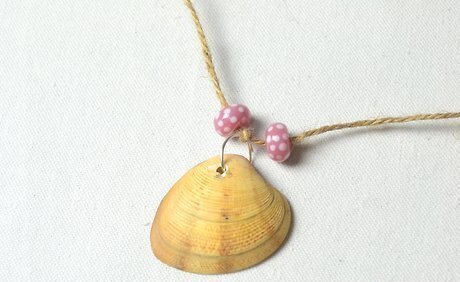
String your necklace. To make a pendant necklace or a necklace with a special accent piece at the center, string this shell first. Then decorate the remaining cord any way you like, using other shells, charms, beads, and jewels. Or if you prefer, you can also leave the remaining cord empty, which will bring more focus to the accent piece. While your necklace doesn’t have to be symmetrical, it should be balanced. For instance, instead of matching a large shell on one side with a large shell on the other, consider balancing the large shell with two or three small shells.
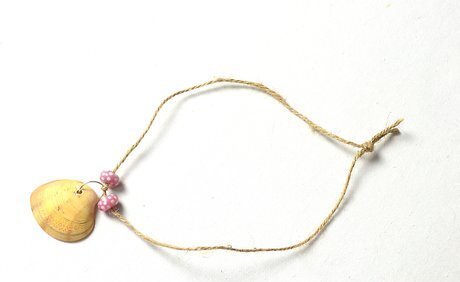
Close the necklace. For necklaces made with twine, cord, or nylon line, you can just tie the ends of the necklace together if you wish. Otherwise, you can finish the necklace by adding a clasp: On each end of the necklace, attach a crimp, followed by the clasp end. Loop the excess cord or wire back through the crimp. Pull it tightly so the clasp and crimp are touching, and are butted up firmly against the final bead or shell. Continue holding the excess cord firmly as you use the pliers to crimp the metal crimp in place. Use scissors or wire cutters to cut the excess cord.
Making a Double Seashell Necklace
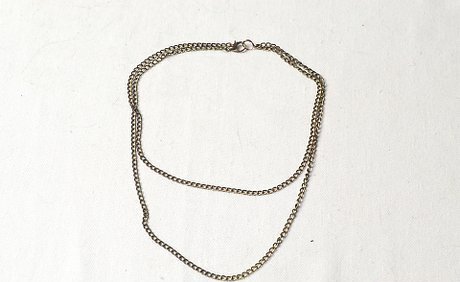
Choose a metal chain. For this project, look for a double necklace (one that has two rows of chains attached near the clasp). Make sure there's at least one to two inches (2.5 to 5 cm) of space between the upper and lower chain. The type of metal, such as silver or gold, is a matter of preference. Choose something that will complement your shell selection.
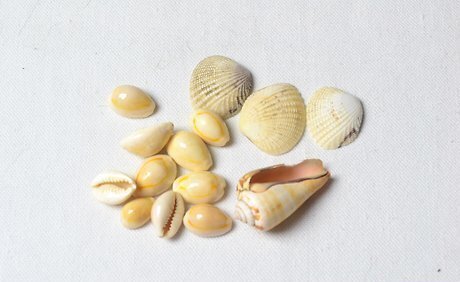
Choose your shells. For this project, you will need 10 small shells of roughly the same shape, three medium shells of your choosing, and one medium conical shell. The color choices and shell styles are a matter of personal taste. This necklace will have two focal points: a cluster of three medium shells in the center of the upper chain, and the conical shell at the center of the lower chain. The 10 smaller shells will be distributed evenly around the focal point shells.
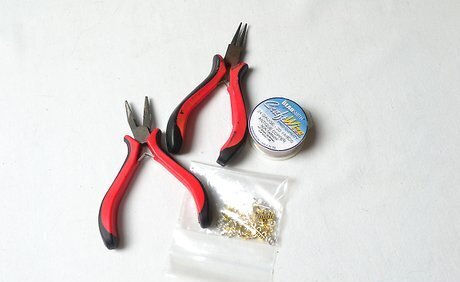
Gather your supplies. Along with the chain and the shells, you'll also need 24-gauge jewelry wire (in a color of your choice), pliers, wire cutters, a drill, and 12 jump rings.
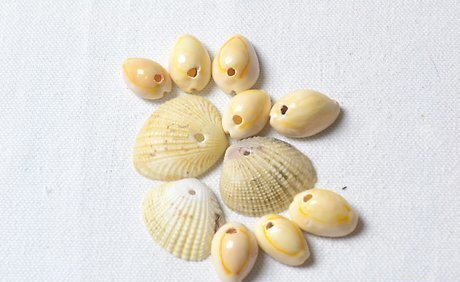
Prepare the shells. Set aside your conical shell. For the other 13 shells, drill holes in them in the location where you want them to attach to the necklace. Use a marker or pencil to mark the spot on each shell where you want it to attach to the cord, then hold the shell against a flat surface and use light pressure to drill a small hole in the shell. Finish preparing the shells by doing the following: Use the pliers to attach a jump ring to each of the 10 smaller shells. Do not close the jump rings yet. With the three medium shells, arrange them all on a single jump ring, but don’t close the ring.
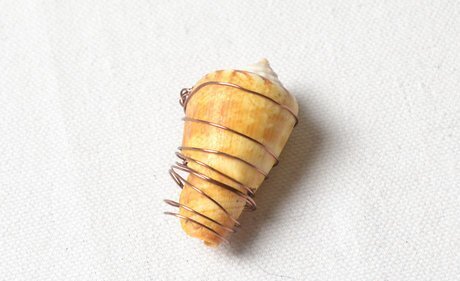
Wire-wrap the conical shell. To create an added point of interest, wire-wrap the conical shell and attach it to the necklace with wire, rather than a jump ring. To start, cut a piece of 24-gauge wire six times the length of the conical shell. Hold the wire in the center by pinching it with your index finger and thumb. Wrap the wire around the tip of your index finger and twist the two pieces together three times to form a small loop at the center of the wire. Spread the two wire ends out and position the middle of the fat top (not the pointed end) of the conical shell where the twist is. Begin wrapping the two wires around the shell at an angle, forming stripes like on a candy cane. When you’ve wrapped the entire shell right down to the tip, twist the wires around each other three times to secure them in place. Separate the remaining wire ends. With the pliers, grab the tip of one wire and fold it back on itself. Then grab the folded end and roll it back on itself again. Continue doing this until you reach the twist and there's no more wire to roll. The excess wire should look like a spiral. Repeat with the other wire end.

String the shells. Start with the conical shell. Attach a jump ring to the wire loop you created, and attach this to a single link at the center of the necklace’s lower chain. Close the jump ring with pliers. Then take the three medium shells and position them in the center of the necklace’s upper chain. Insert the jump ring into a single link and close it. Repeat with the 10 small shells. On the lower chain, attach three small shells to the chain on either side of the conical shell. On both sides, place the first shell two inches from the center, then the next shell another two inches from that shell, and the third shell another two inches away. Repeat with the upper chain, using only two shells on either side of the center shells.
Obtaining, Cleaning, and Preserving Shells
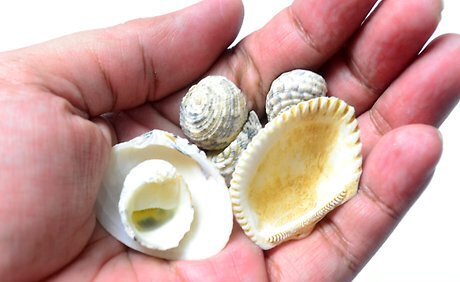
Obtain seashells. Seashells can either be gathered from the beach or purchased at a craft store, or you can buy synthetic or artificial shells. While artificial shells may not have the same natural appeal, they are better for the environment. Seashells play an important role in coastal ecosystems, and provide homes to algae, birds, and hermit crabs. Removing shells from the beach can have a detrimental impact on the creatures that rely on them. If you really want to collect your own shells, only take a couple from each beach, and never take shells from highly visited beaches where others are often collecting shells. Always inspect each shell to ensure a hermit crab hasn’t claimed it for a home. Shells are also a byproduct of the fishing industry, and there are some shell suppliers that only obtain shells from these producers. Buying shells from these producers could have less of an impact than purchasing ones collected from beaches.
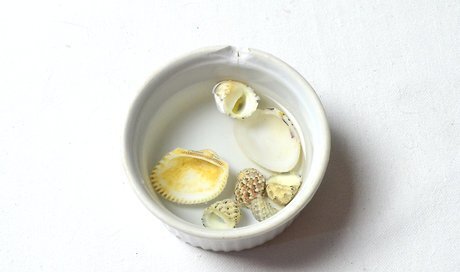
Clean the shells. Natural shells that are collected from the beach need to be cleaned to remove dirt, particles, odors, and bacteria. The most common way to clean shells is to soak them in a bleach and water solution: Fill a bowl with one part bleach and three parts water. Soak the shells for anywhere from 30 minutes to 24 hours, until the leathery covering—called the periostracum—comes off. When the shells are clean, use a soft cloth or soft-bristled toothbrush to give them a gentle scrub, then rinse them well with clean water. Allow the shells to dry.
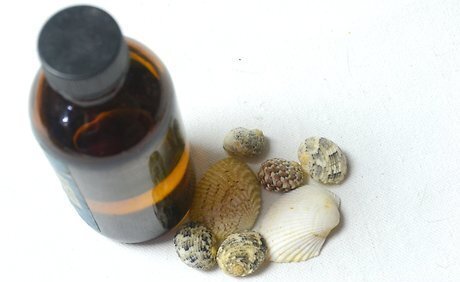
Preserve the shells. You don’t actually have to do anything to preserve the shells, but if you want to enhance and protect their shine and luster, you can polish them with mineral oil. Use a lint-free cloth to rub a small amount of mineral oil over each shell, and gently polish the inside and outside. Since you'll be using the shells for jewelry, another option is to protect them with a thin coat of satin-finish polyurethane varnish. Apply a light layer of varnish to the inside and outside of the shells using a clean paintbrush. Allow the varnish to dry completely.















Comments
0 comment